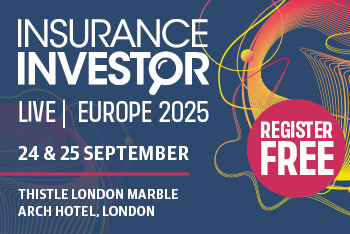Should greenwashing still be a concern for fund operators?
Anna Colombatti, Investment Chief Operating Officer and Head of Research, AXA IM Select, discusses what operators should be looking out for in terms of greenwashing – is it still the problem it once was? Or has the issue become more subtle?
Andrew Putwain POSTED ON 8/13/2024 8:00:00 AM
 Anna Colombatti, Investment Chief Operating Officer and Head of Research, AXA IM Select.
Anna Colombatti, Investment Chief Operating Officer and Head of Research, AXA IM Select.
Andrew Putwain: Let’s start broad: Is greenwashing still a concern – despite heightened awareness, frameworks, and education in the market – if so, why?
Anna Colombatti: Greenwashing is indeed still a concern; it is still an issue that requires careful assessment and oversight; it's become more subtle, and more nuanced than the past cases of unsubstantiated claims or empty ESG messages that happened previously.
For example, if we look at the famous scandals and cases that received fines from the SEC, for instance, DWS Asset Management and Goldman Sachs Asset Management, they were not integrating ESG considerations, but were still calling their funds “ESG fund XYZ”.
"Asset managers are exposed to litigation and regulatory risk related to greenwashing by companies they invest in."
The greenwashing won’t be of this magnitude anymore because there is also a new European Securities and Markets Authority (ESMA) regulation that stipulates the guidelines about what you call your fund. It's not going to be such a glaring misuse of the terms without real substance - it's going to be about the disclosure, about the data, and how that is evidenced and substantiated.
Greenwashing is still present to some degree in many different industries and within the financial services industry, there is still concern that more needs to be done to avoid being caught in the next scandal.
It poses particular challenges for investment professionals. In addition to having to navigate greenwashing concerns around their own products, asset managers are also exposed to litigation and regulatory risk related to greenwashing by companies they invest in.
Andrew: How have instances of greenwashing changed – what do you recommend as strategies for operations professionals to watch out for it and work to overcome issues it brings up?
Anna: Greenwashing has become more nuanced, so it's less about the big and bold claims but more about the - sometimes - thin layer of corporate sustainability that hides a variety of issues under the E, S, and G, respectively.
The expectation of competitive advantage linked to terms such as ‘sustainability’, ‘responsible investment’ and ‘impact’ has opened the door to green and social washing; and a lack of accountability around a rapidly evolving landscape of corporate sustainability has helped keep this door open for a long time.
When it comes to social washing, we are seeing it concerning diversity, equity and inclusion (DEI), where, unfortunately, there was a lot of interest and push for DEI. But what we are hearing is that the policies have fallen through. For example, budgets are being cut across many organisations, so whilst you can still see on the website that DEI is front and centre at a company, you can see when you start digging a little deeper that sometimes it's just a slogan, and it's not backed up by any evidence that this commitment is being kept.
Greenwashing has evolved to cover the social sphere with more instances of social washing for example, with contradictions between a business’ image and actual conduct on social issues.
Misleading communications on issues like human rights, occupational health and safety, community impact, or child labour. Many of the social issues are closely tied to environmental issues. Companies that greenwash are more likely to social wash, but they utilise similar tactics like selective disclosure, symbolic gestures, and corporate political action. Here is where the scrutiny needs to focus.
Andrew: Can you give us insights into the operational challenges around assessing the risk that comes with greenwashing – what does it entail and what strategies do you recommend?
Anna: Greenwashing erodes investor trust and results in misallocated assets. Through exaggerated green claims, companies could attract funds they are not deserving of. Reputational damage is difficult to erase and mistrust around ESG claims ends up eroding the public perception of genuine sustainability endeavours, and it can lead to deserving businesses and ventures being underweighted.
Despite more than two years of debate and discussion on greenwashing risk and how to tackle it, the asset management industry across the EU and the UK continues to struggle with finding the most effective approach to risk mitigation and control. Thankfully, now more firms appreciate the work required to tackle the risk in all its aspects. Following the recent regulatory developments with the Financial Conduct Authority’s Sustainability Disclosure Requirements (SDR) anti-greenwashing rule from May 2024, and ESMA’s final greenwashing report and guidelines on the use of sustainability terms in fund names, it looks like regulatory scrutiny on processes and controls will be more stringent.
"This lack of standardisation can also lead to unintentional greenwashing; therefore, investors increasingly look to form their own views on companies’ ESG performance."
Adding to the complexity of identifying instances of greenwashing is a lack of standardisation in companies’ ESG information, with ratings from third-party agencies often at odds with each other. This area can be problematic because different methodologies result in different outcomes. Unfortunately, it’s quite a new area so if you compare it to the methodologies provided by the bigger rating agencies, they’ve had decades to align on a methodology. Whereas on the ESG side, for ratings, it’s relatively new, so there's been streamlining, and an effort to focus on the same things, but it’s still developing.
We still see that with different providers come different results, which then you cannot aggregate, because you will end up comparing apples and oranges. We decided to pick one provider that aligns with our view of the world of ESG and build on that internally.
This lack of standardisation can also lead to unintentional greenwashing; therefore, investors increasingly look to form their own views on companies’ ESG performance. To do that you have to look at both a lot of quantitative data but also qualitative elements. As far as the analysis of data, for example the application of artificial intelligence (AI) to ESG, data from a wide range of sources is helpful to form more accurate, objective and consistent assessments of companies’ sustainability commitments and performance.
For example, at the moment, we are using a machine learning tool that can digest and analyse a lot of data to ensure that the right language is used and that what we see matches up with anything else a particular company has said about a topic. This is partly to see if we can identify any gaps in consistency, and if so, we can broach that where we need to with the company before it becomes a problem.
In the end, Greenwashing risk needs to be embedded into risk frameworks; similarly, as ESG integration becomes mainstream in the investment process.
Andrew: Moving to ‘authenticity’ in this topic – can you discuss your thoughts on what this means (in your opinion) – how important it is, what you need it for, and how you go about achieving it?
Anna: In the context of ESG, authenticity involves being genuine, open and transparent in how organisations address environmental and social issues and governance practices.
"When leaders model authenticity, it sets the tone for the entire organisation. Employees are more likely to align with the organisation's values and mission."
It means going beyond the bold and loud claims and instead walking the talk and demonstrating a commitment to ethical behaviour, diversity and inclusion, human rights, and environmental stewardship but also the hurdles and struggles along the way. When organisations embrace authenticity in their ESG efforts, openly admit mistakes and show effort and commitment to do better they build trust with stakeholders and drive positive impact in the world.
Moreover, when leaders model authenticity, it sets the tone for the entire organisation. Employees are more likely to align with the organisation's values and mission, leading to increased engagement, productivity, and innovation.
Numerous leaders have succeeded in driving career growth and positive ESG impact by embracing authenticity. One example is Patagonia’s former CEO, Rose Marcario. Under her leadership, Patagonia has become a renowned advocate for environmental sustainability, social justice, and employee well-being. Or we can look at Microsoft, which has, over time, been positioned by its senior management as a leader in ethical technology and responsible AI.
Andrew: Focusing on due diligence – can you discuss strategies that you’re seeing that you think are effective? Are there specific tasks or steps you would recommend?
Anna: Good and reliable quantitative data is very important for effective due diligence but so are the qualitative aspects of ESG integration approaches: insights obtained from a dialogue with key corporate decision makers such as executives and the board of directors on financially material ESG considerations, for instance. Not everything in the ESG space can be quantified and therefore the qualitative engagement information becomes important for an authentic ESG integration approach.
A lot of stakeholders in financial services want to quantify sustainability, but this isn’t always possible. You need a qualitative overlay beyond ratings from third-party providers to make an accurate assessment of the true sustainability performance of investee companies and assets. Third-party ratings can be limited so they should be used as the starting point. We then ask our fund managers and analysts to do their own fundamental, bottom-up ESG research. We must focus our research efforts on those ESG considerations that are financially most relevant for the particular asset or company that we are analysing and then factor in the thematic and sectoral ESG insights from stewardship engagement.
"Yes, if people want to commit fraud, they’ll always find a new way to do it but hopefully, we now have good guidelines to combat this."
Throughout the life of an investment, we tackle greenwashing risk by comparing ESG pledges and claims to actual actions and progress. We do this by analysing structured and unstructured data and assessing commitments by looking at company disclosures, contextual company information and information from a wider context, such as social media, news, independent research, and reports from non-governmental organisations.
I hope that with more awareness of the topic, and more regulatory scrutiny, this will help to change things. Yes, if people want to commit fraud, they’ll always find a new way to do it but hopefully, we now have good guidelines to combat this.
Anna Colombatti will speak at the Fund Operator Summit | Europe on 15 October 2024 in London. Read the agenda, and find out how to register, here.
Please Sign In or Register to leave a Comment.
SUBSCRIBE
Get the recent popular stories straight into your inbox




